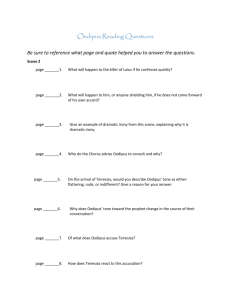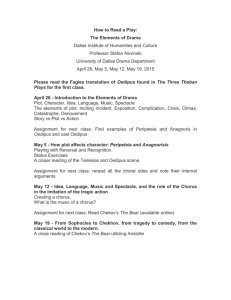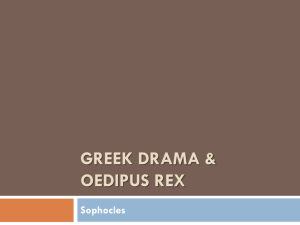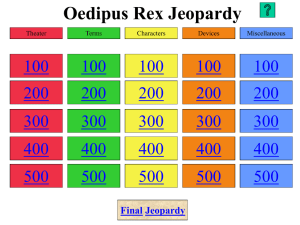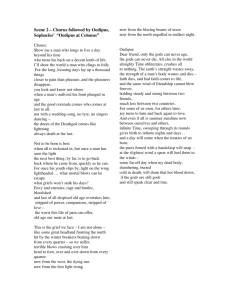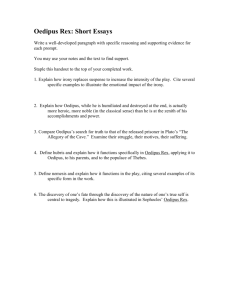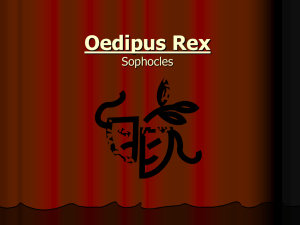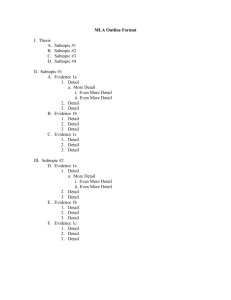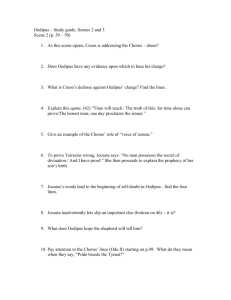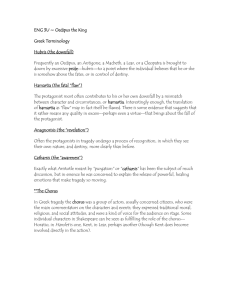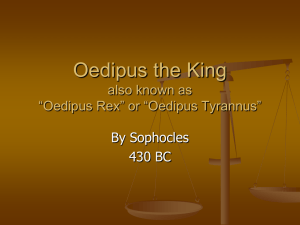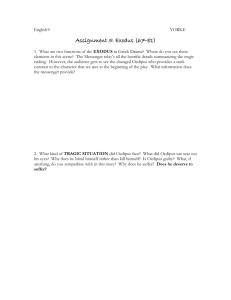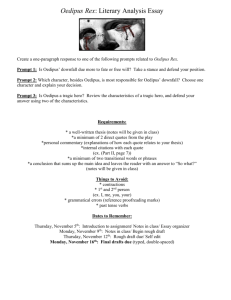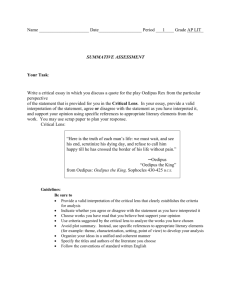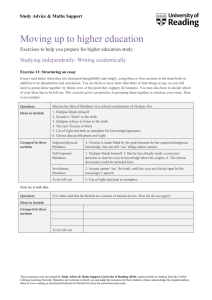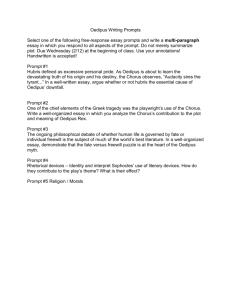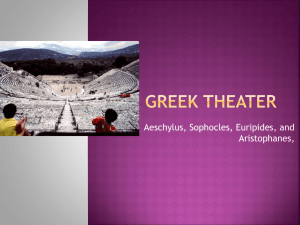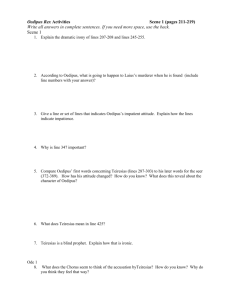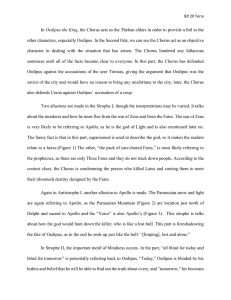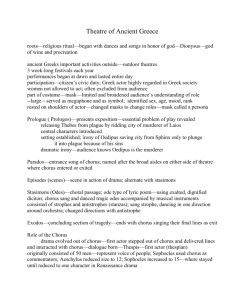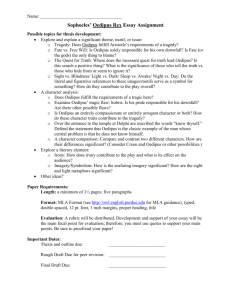Vocabulary: anagnorisis, peripeteia, catharsis, catastrophe, chorus
advertisement
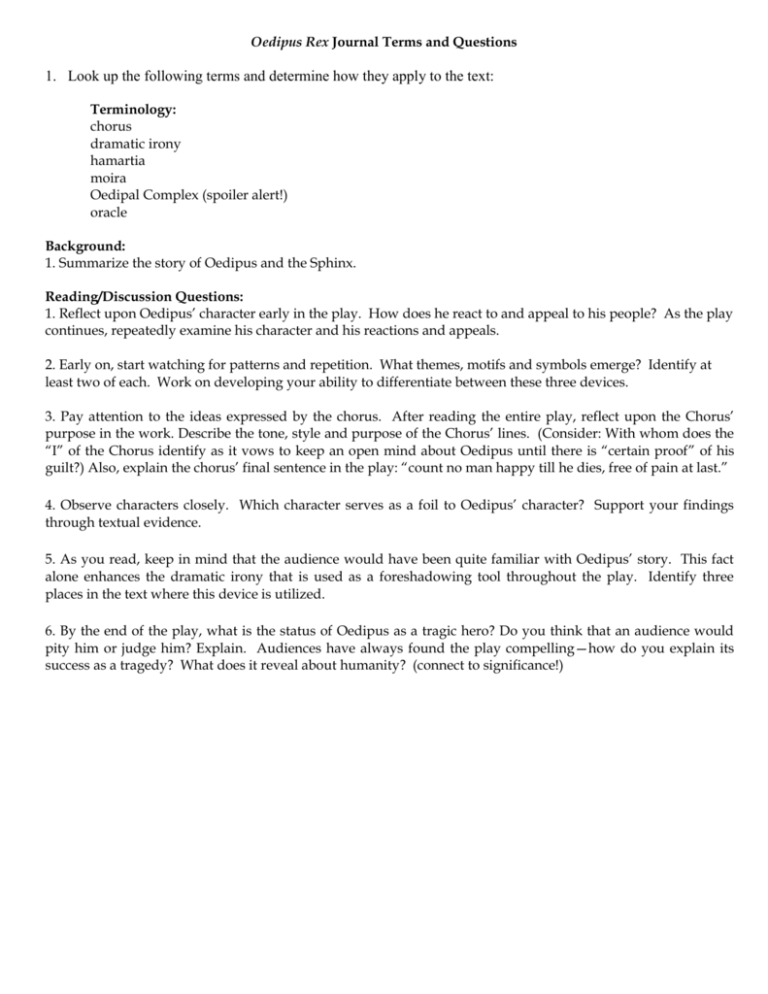
Oedipus Rex Journal Terms and Questions 1. Look up the following terms and determine how they apply to the text: Terminology: chorus dramatic irony hamartia moira Oedipal Complex (spoiler alert!) oracle Background: 1. Summarize the story of Oedipus and the Sphinx. Reading/Discussion Questions: 1. Reflect upon Oedipus’ character early in the play. How does he react to and appeal to his people? As the play continues, repeatedly examine his character and his reactions and appeals. 2. Early on, start watching for patterns and repetition. What themes, motifs and symbols emerge? Identify at least two of each. Work on developing your ability to differentiate between these three devices. 3. Pay attention to the ideas expressed by the chorus. After reading the entire play, reflect upon the Chorus’ purpose in the work. Describe the tone, style and purpose of the Chorus’ lines. (Consider: With whom does the “I” of the Chorus identify as it vows to keep an open mind about Oedipus until there is “certain proof” of his guilt?) Also, explain the chorus’ final sentence in the play: “count no man happy till he dies, free of pain at last.” 4. Observe characters closely. Which character serves as a foil to Oedipus’ character? Support your findings through textual evidence. 5. As you read, keep in mind that the audience would have been quite familiar with Oedipus’ story. This fact alone enhances the dramatic irony that is used as a foreshadowing tool throughout the play. Identify three places in the text where this device is utilized. 6. By the end of the play, what is the status of Oedipus as a tragic hero? Do you think that an audience would pity him or judge him? Explain. Audiences have always found the play compelling—how do you explain its success as a tragedy? What does it reveal about humanity? (connect to significance!)
